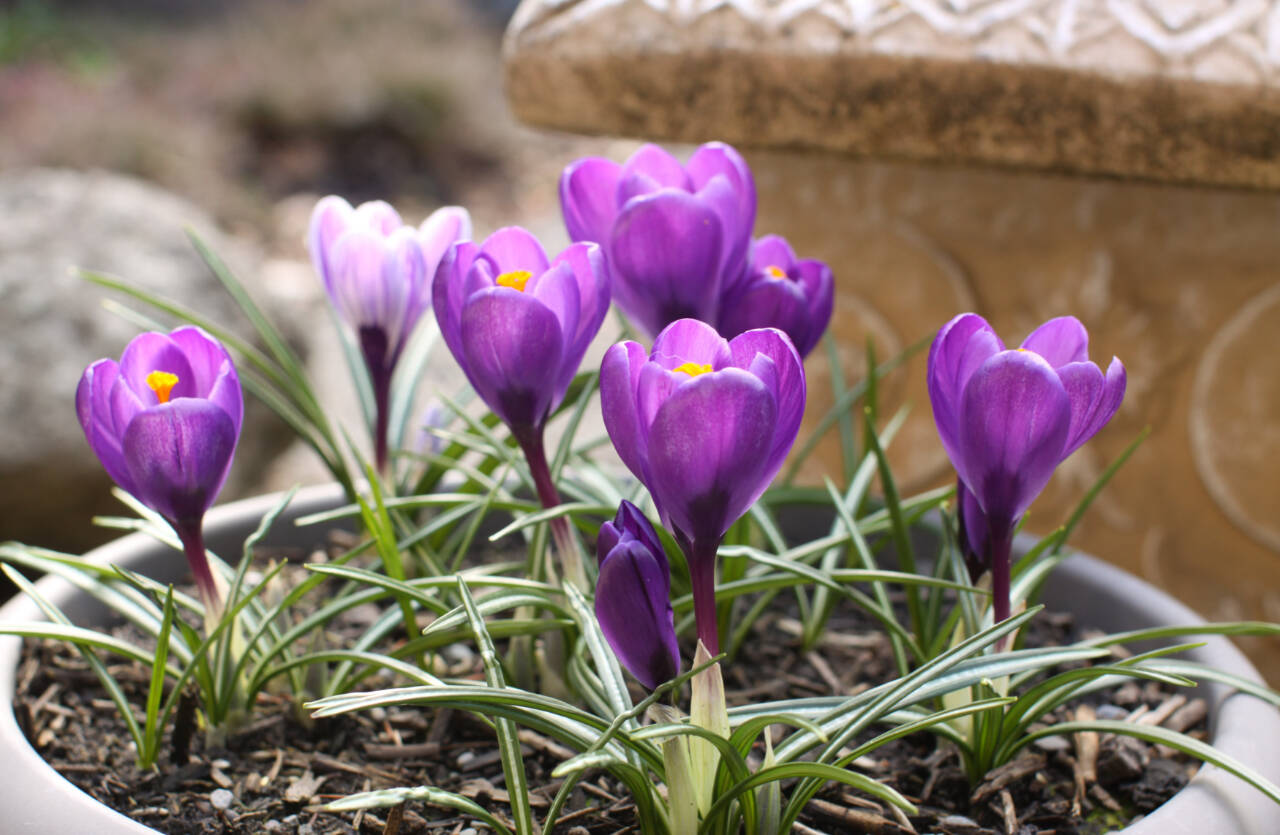Therapeutic horticulture involves passive or active engagement of people connecting with plants and nature. The act of gardening or simply being in nature helps to provide a higher quality of life by enhancing body, mind and spirit.
While fall may signify a time to slow down and put various parts of the garden to rest, it is also a great time for planting. Bulb planting is an important aspect of the fall gardening season that gives the promise of a colorful spring, while also providing an array of therapeutic benefits.
When applying the specific activity of bulb planting, this simple action can produce cognitive, physical, and emotional rewards for a wide variety of populations. These positive effects can reach all ages and abilities.
Therapeutic benefits may include:
• reduced stress
• intellectual stimulation
• support emotional health
• provide a social outlet
• develop/maintain motor skills
• provide sensory stimulation
• improved memory and cognition
• connect with outdoors
• build self confidence
• sense of responsibility/accomplishment
• promote hope/interest in the future
Planting bulbs in raised beds, planters, or containers may help make the activity more accessible than in-ground planting. Adaptive tools are also available for planting that can make digging easier by being pre-set to the desired bulb depth.
In the Pacific Northwest, specifically the Washington state peninsula area, the prime time to plant bulbs is late October into early December, November being the happy medium ground.
Bulbs that do well in the Clallam County area include:
• allium
• anemone
• crocus
• daffodils
• iris
• fritillaria
• grape hyacinth (muscari)
• hyacinth
• lilies (Asiatic)
• snowdrops
• tulips
The versatility of bulb choices, planting methods, and planting locations make this gardening activity easily adaptable to each participant. A great way to bring bulbs indoors for folks who may have limited access to outdoor spaces is to force bulbs indoors.
Bulb selection will determine proper care methods for this technique. Bulbs such as amaryllis and paperwhites do not require a chilling time prior to planting. While crocus, hyacinth, daffodils and tulips all need varying times of chilling to mimic the natural winter season to initiate blooming.
Three common methods for forcing bulbs are growing in water, growing in soil, and growing in pebbles or rock. Growing in soil tending to be bulbs preferred method.
When growing in water or pebbles, make sure that the bulb sits above the waterline with just the base touching the water. This method creates a view of the roots as they begin to grow, providing a full picture of the bulb top to bottom.
This activity not only produces a means to bringing color and growth indoors, but a way to bring hope, wonder and sensory stimulation into new environments.
Whether in home, a child’s classroom, or a residential care community, planting fall bulbs serves to brighten both landscape and mood.
Holly Levinski is a professional gardener with an associate of arts degree in greenhouse management and a certificate in horticultural therapy from the Horticultural Therapy Institute.
Dive into Horticultural therapy
Delving deeper into the world of therapeutic horticulture is the profession of horticultural therapy. The American Horticultural Therapy Association defines the practice as “the engagement of a person in gardening and plant-based activities, facilitated by a trained therapist, to achieve specific therapeutic treatment goals.” Horticultural therapy programming is practiced primarily in three modals: vocational, therapeutic and wellness. Treatment methods are as diverse as the populations they serve. For example, horticultural therapy may be used in rehabilitative, clinical, and educational settings just to name a few. Locations may consist of structured greenhouses or gardens to natural landscapes, farms, or wilderness. Populations may include those who are incarcerated, in hospital setting or long term care facility, veterans, students and beyond.
‘Growing Inclusively’
Make sure to join us for the upcoming Green Thumb presentation “Growing Inclusively: Supporting Local Food Security Through the Power of the Garden Plot” presented by Benji Astrachan, Washington State University Extension educator, from noon-1 p.m. Thursday, Oct. 13, on Zoom.
Join the meeting by clicking on a link at extension.wsu.edu/clallam/master-gardener-calendar. Or join by phone by calling 253-215-8782 (meeting ID 920 0799 1742, passcode 709395).
Astrachan will cover the basics of food insecurity and efforts towards increasing access to healthy locally grown food across Clallam County. He will speak about the different programs and organizations working towards a healthier local food system for all community members, and attendees will hear about how they can become involved with their own gardening interests and skills.
He will also give gardeners a robust understanding of where and how to contribute to food access efforts; what kinds of foods may be grown by avid gardeners that are most needed and appreciated by those experiencing food insecurity; and how to get involved as a gardener in food access efforts. Gardeners will be able to better understand their role and potential for supporting their neighbors in need and have clear pathways to involvement and improvement through their unique gardening skills.
Presentations cover basic gardening topics relevant to most home gardeners. Seminars are free, but donations to help support the WSU Clallam County Extension Master Gardener program or Master Gardener Foundation of Clallam County are appreciated.


